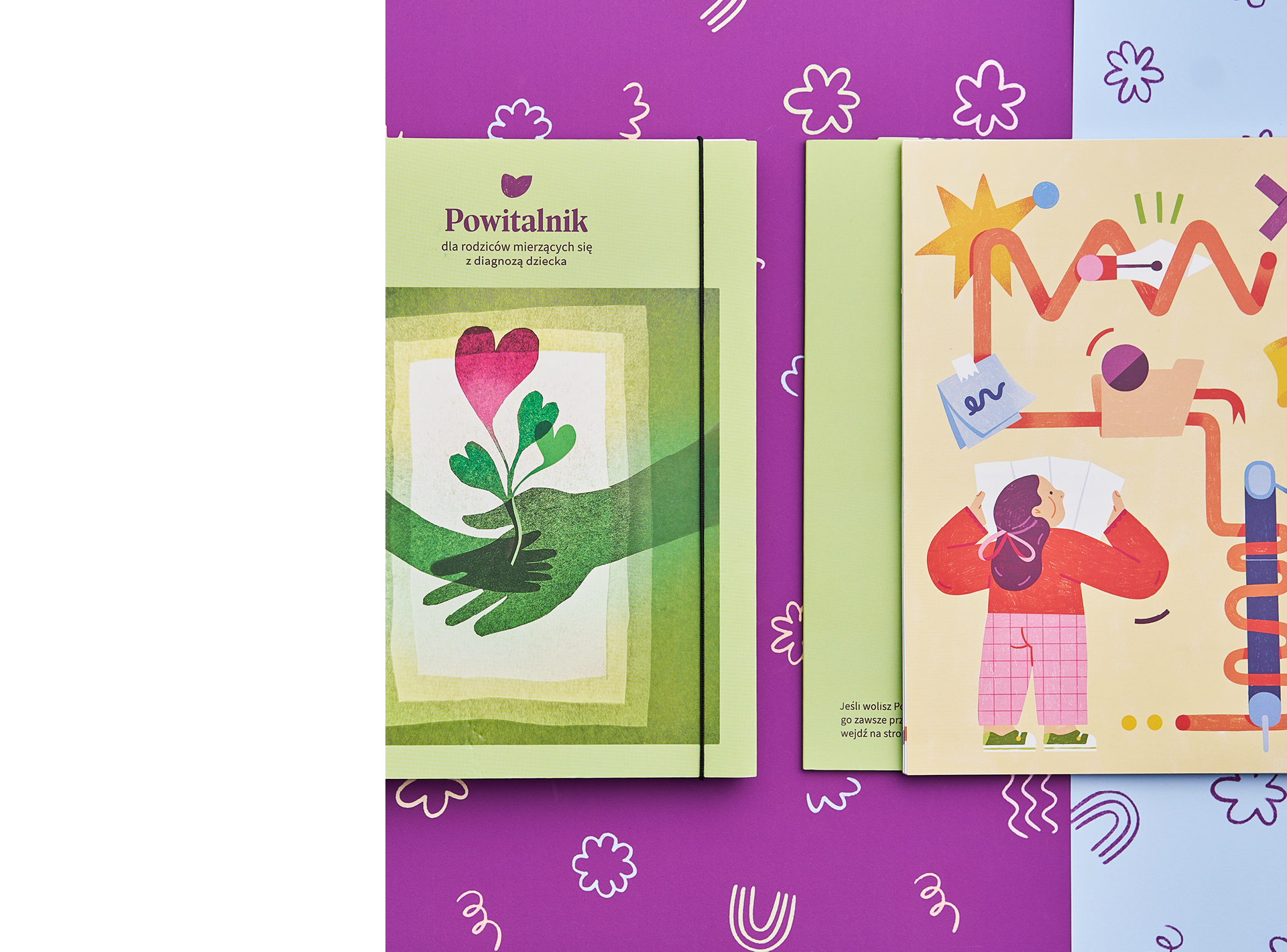What if design could offer comfort when words are hard to find? This question lies at the heart of Powitalnik — a guide created to support parents and professionals when facing a child’s diagnosis of disability, illness, or special needs. Initiated by the Mudita Foundation and developed in collaboration with Admind Branding & Communications and Mustela, Powitalnik is more than a publication – it’s a gesture of care, empathy, and inclusion.
At Admind, we believe that design has the power to open hearts and support real change. That’s why we not only contributed to the visual identity and print preparation of Powitalnik, but also helped shape its communication and accessibility. One of our key roles was bringing together 11 of Poland’s leading female illustrators — artists who, with generosity and great sensitivity, created original works for each chapter of the guide.
All of the illustrations featured in Powitalnik were created pro bono. Each artist stayed true to her unique graphic style while responding deeply and personally to the emotional weight of the texts. Their artworks enrich the guide with warmth, insight, and visual strength — transforming it into a publication based on inclusive design that speaks not only through words, but through images that offer hope and understanding.
In the following pages, we invite you to get to know the illustrators behind Powitalnik — their inspirations, reflections, and the stories behind the art.
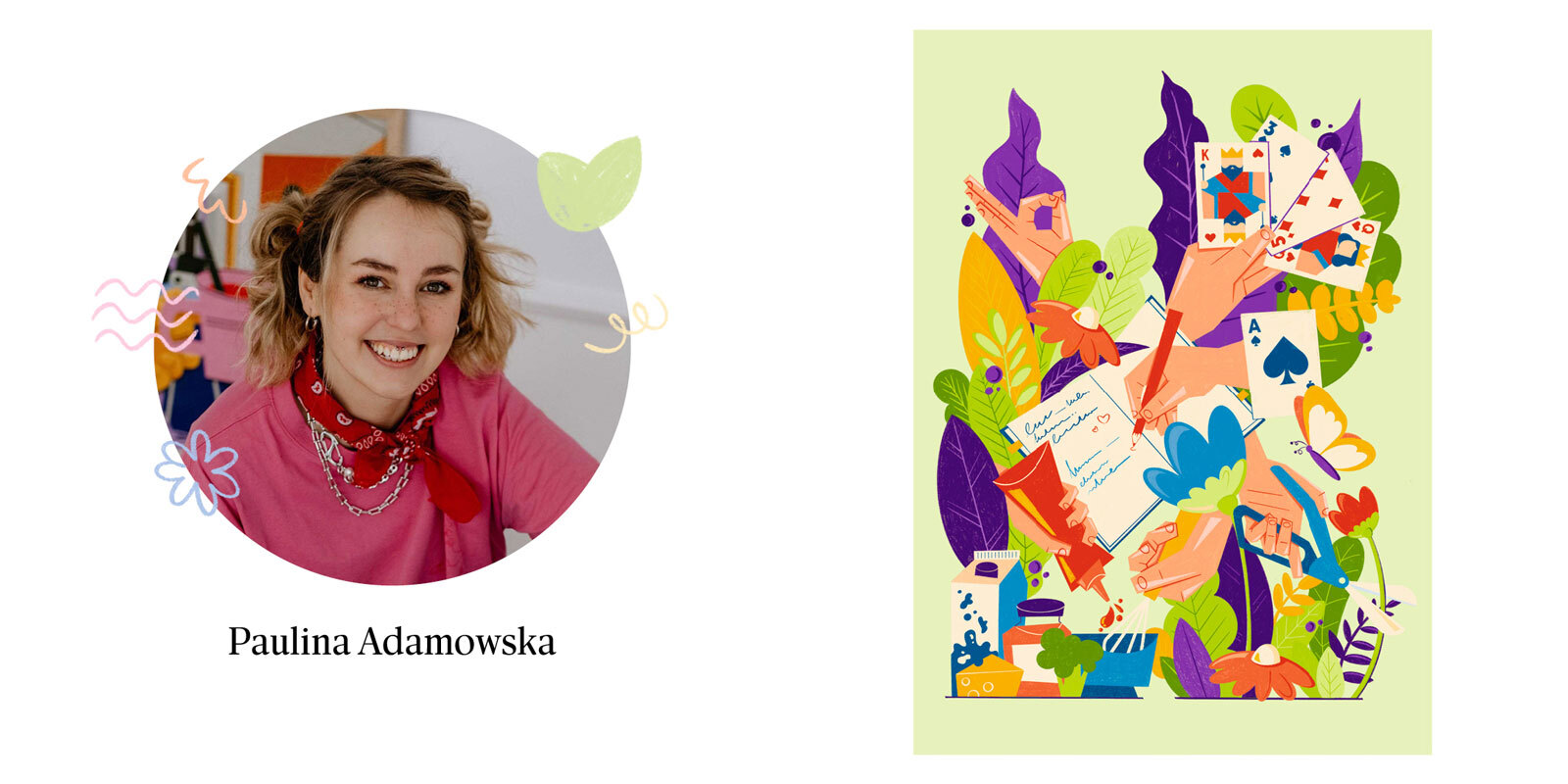
What moved or challenged you during the illustration process?
Magdalena Koziel-Nowak:
“I created the illustration for the chapter ‘Prenatal Diagnosis’, and I won’t hide the fact that it was not easy to capture, in one image, the overwhelming emotions and experiences that arise when parents hear a diagnosis. I remembered how, during my own pregnancy — and I assume it’s the same for many others — the thought, the silent wish, ‘Let it be healthy,’ kept spinning in my mind. That brought uncertainty, confusion, fear… And what if the diagnosis says, ‘It won’t be healthy’? I can only guess that those emotions multiply. The challenge was to create an illustration that wouldn’t just show this difficult moment, but one in which parents might find a little bit of comfort, hope, and strength to help them move through it together.”
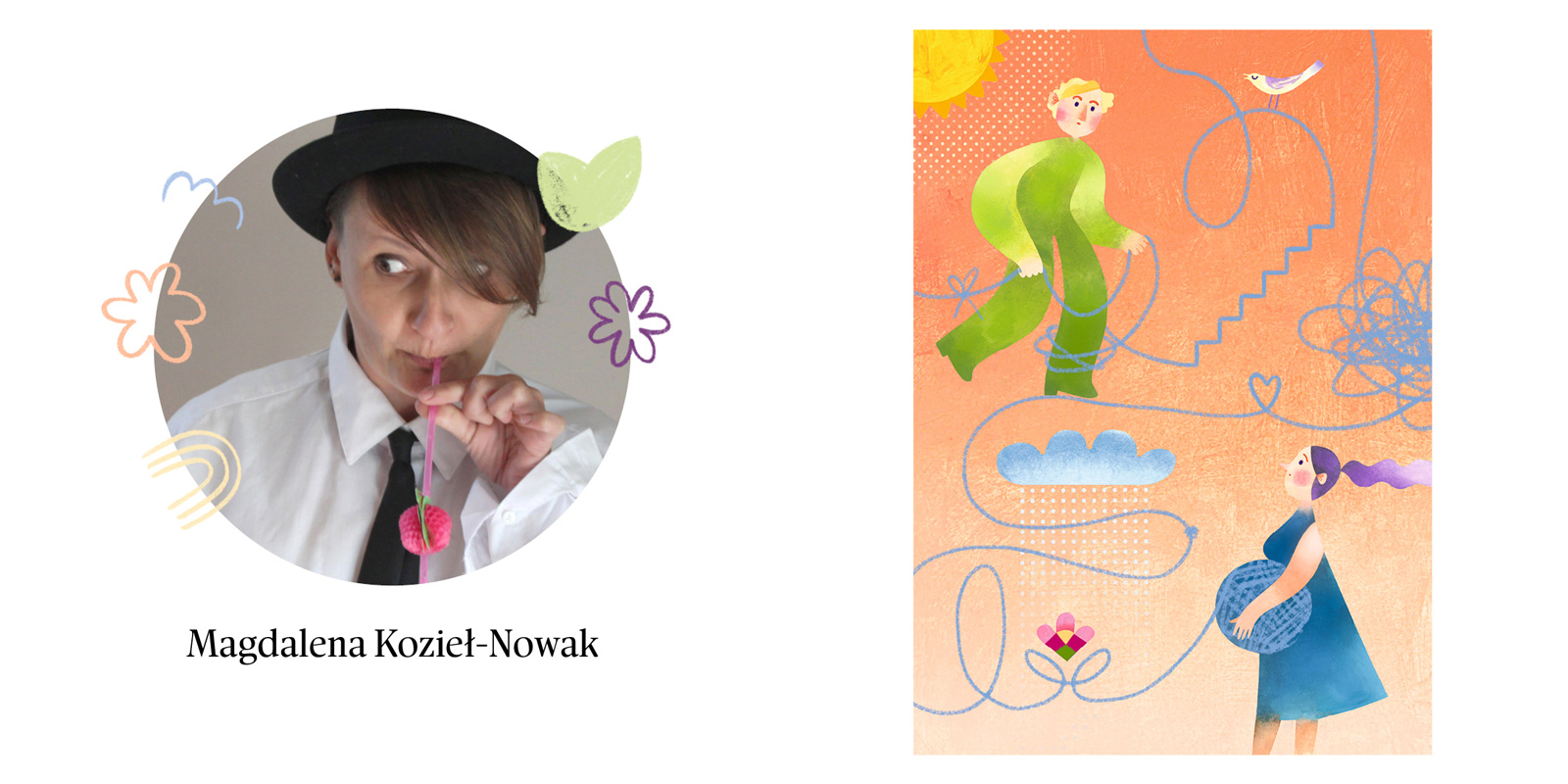
Asia Wójtowicz:
“With every illustration I create, I connect with it through the lens of personal experience. My inspiration always comes from the world around me. With this particular piece, I reflected deeply on my own relationship. Given how personal the theme was, it inevitably stirred something within me.I am lucky to have a wonderful, supportive, and wise husband by my side, with whom I’ve experienced both the best and the hardest times over the past nine years — always with mutual empathy and support.”
Paulina Krynicka:
“An illustration can serve as an additional channel of communication. Through color, composition, and the expression of characters, it becomes a separate vehicle of information that supports the text. But its role goes beyond informing — it can also be therapeutic, replacing words when they are hard to say. And it helps set the emotional tone, making the content more approachable and accessible for readers of all ages.”
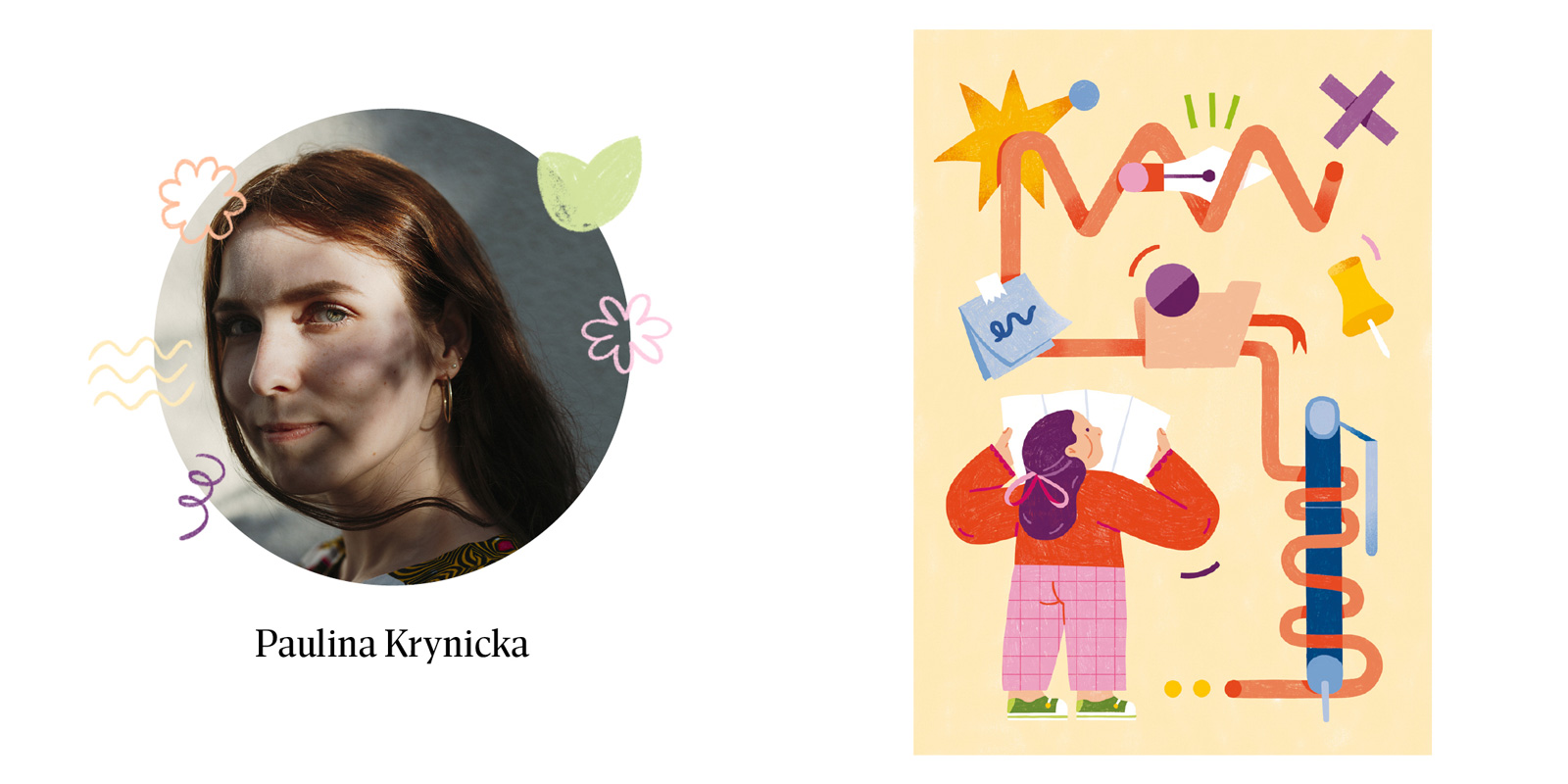
Magda Chołaścińska:
“Often, an illustration can help someone feel or understand something in a symbolic and non-intrusive way. Sometimes it’s just a sign that someone else sees you and feels what you’re going through. When dealing with difficult topics, images can sometimes express emotions even more gently than words can — and that can be incredibly valuable.”
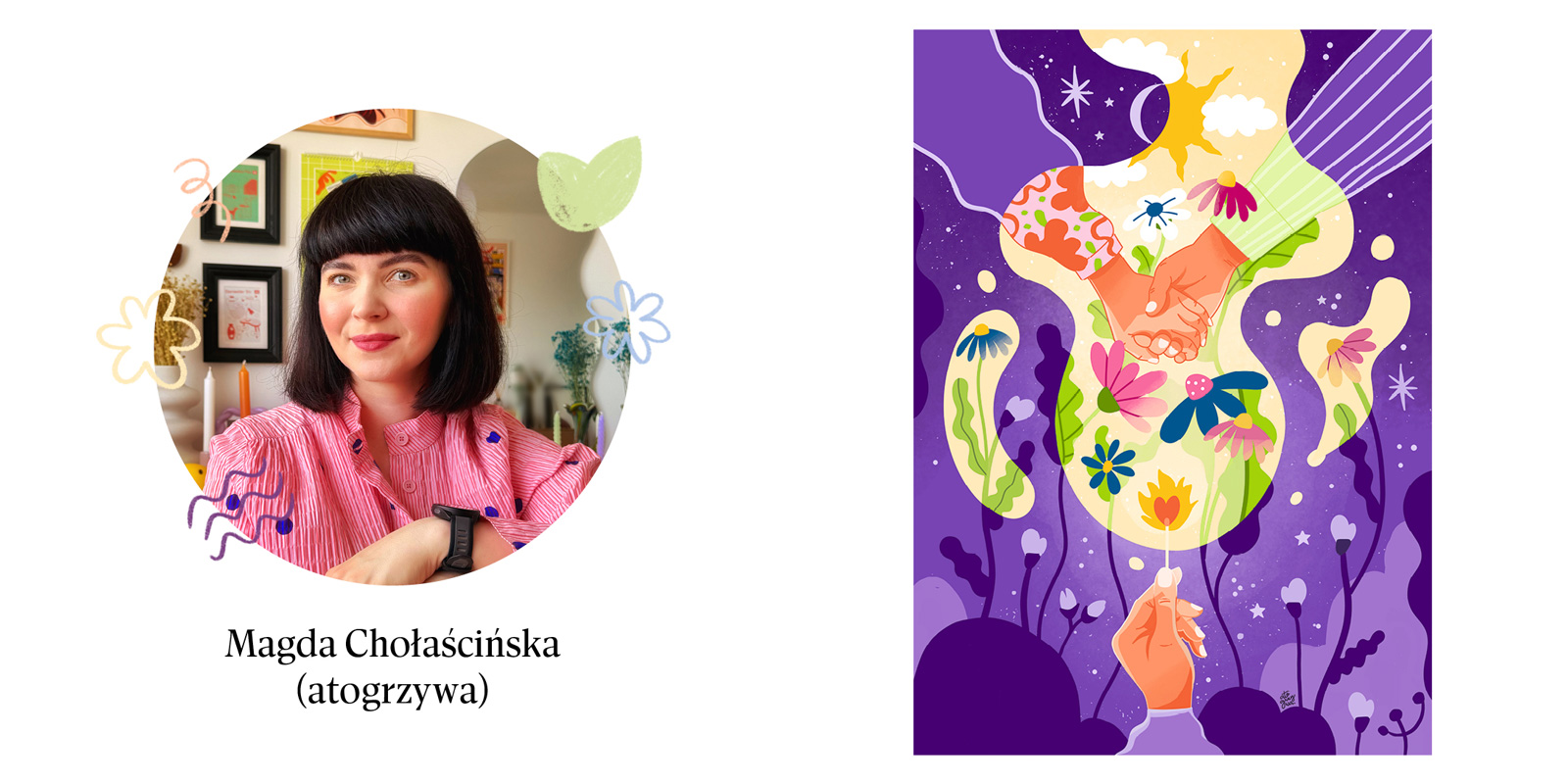
Asia Wójtowicz:
“Of course, the text is the core of Powitalnik — it delivers essential knowledge and real solutions for parents of children with illnesses, disabilities, or neurodiversity. I don’t believe illustration alone can fully carry the weight of that support, but it can make the content easier to absorb. It can give readers a moment to pause between sections, or invite a closer look. I think everyone who sees the illustration can relate it to their own relationship and interpret it personally.”
Katarzyna Bogucka:
“There are times I doubt the importance of what I do — producing ‘just pictures.’ But my friends remind me: what I do can make people smile, give them strength, help them relax, and offer support. Many times I’ve illustrated tired, discouraged, or angry mothers. On the one hand, I want to support and sometimes even make them laugh. On the other, I want to highlight that hard thoughts and feelings are common — that in exhaustion and helplessness, we are many.”
Why did you decide to participate in the Powitalnik project?
Magda Chołaścińska:
“I immediately felt this was something important and very needed. Powitalnik gives parents support — and if I can contribute even a small piece in the form of an illustration, I don’t hesitate. The topic is also personally close to me. I’m an aunt to the wonderful Anastazja, a girl with a disability. From my own family’s experience, I know how important this kind of support is — at every stage. I didn’t think twice about joining the project.”
Marianna Oklejak:
“The moment I heard what Powitalnik was about, I knew it was something special and I wanted to be part of it. Life isn’t always rosy, and in those moments, we need tenderness and support. Those two words — support and tenderness — are keys for me. I want to create illustrations that bring even a little bit of comfort to the heart. My contribution was made from layered, backlit tissue paper. A grown-up’s hand holds a child’s — and where they touch, a small plant grows: a new, shared life.I believe we can turn difficult moments into unexpectedly beautiful continuations. That giving and receiving warmth and concrete help really does make a difference. Powitalnik is doing exactly that — and I’m honored to contribute.”
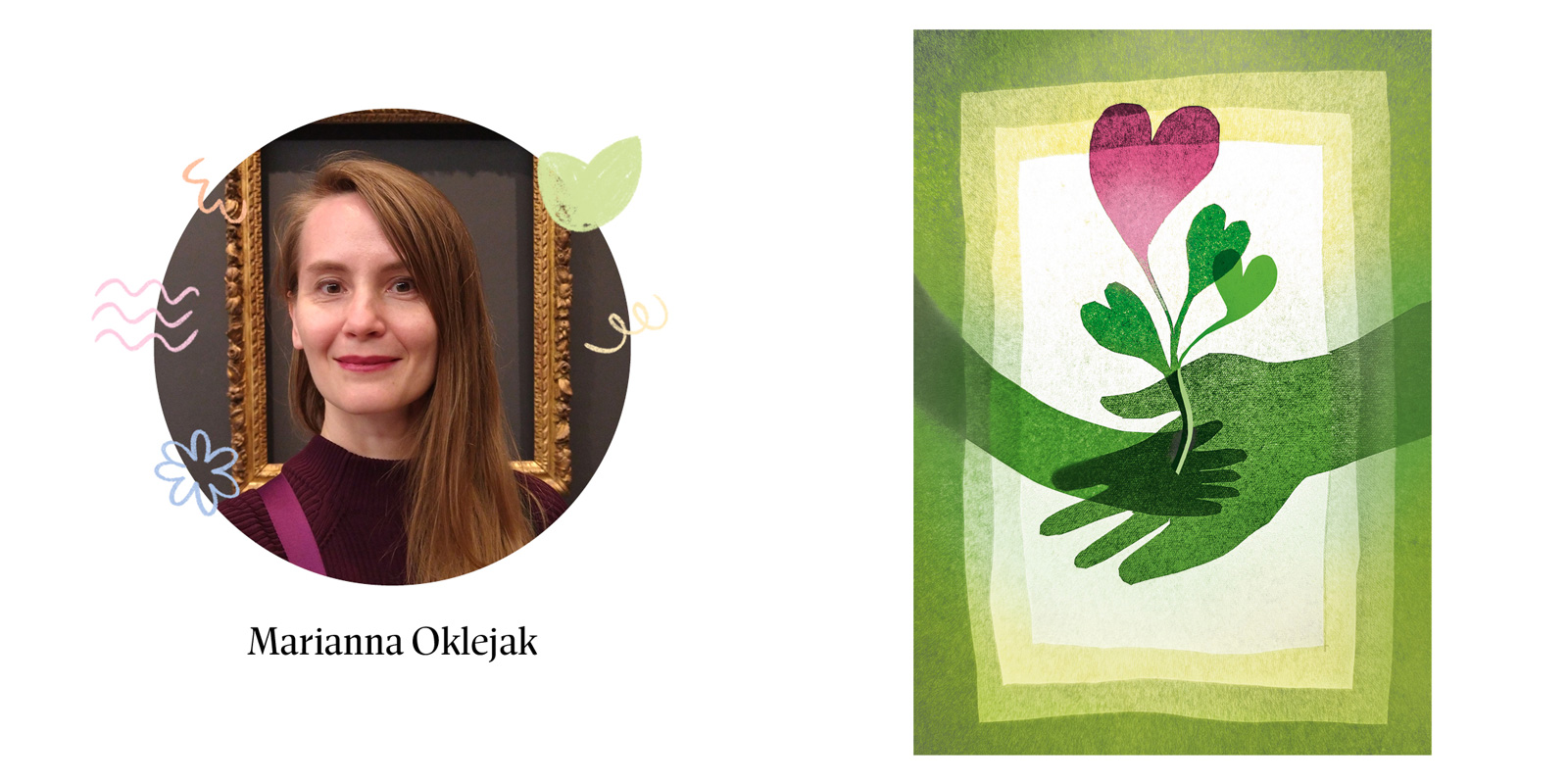
Asia Wójtowicz:
“What convinced me to take part was the purpose behind the project. I can only imagine the difficulty a parent faces when learning their child has an illness or disability — and how that transforms their life. In middle school, I was in an integrated class with several peers who had various disabilities. We were a really close class — despite our differences, or maybe because of them. I remember the parents, especially the mothers, being very involved in school life. Reflecting on that time, I feel connected to this theme. If I can contribute even a little bit to a project that spreads awareness and offers help to future parents, I’ll be truly satisfied.”
Katarzyna Bogucka:
“A few years ago, just after the birth of my first son, I co-created a notebook for pregnancy and the first year of a child’s life. Even then, I had a growing awareness: motherhood is not a piece of cake. People talk about this more now, but when you’re alone at home with that sudden weight of responsibility, it feels lonely. I joined the Powitalnik project because it’s a kind gesture of support for other parents.”

Aleksandra Czudżak:
“I joined because Powitalnik is a calm, empathetic, non-judgmental publication. In the face of a difficult diagnosis, people have countless fears and questions. I believe illustration can express those complex emotions through symbols and visuals. So many guides and brochures are stiff and rigid — the visual aspect, in my view, is incredibly important.”
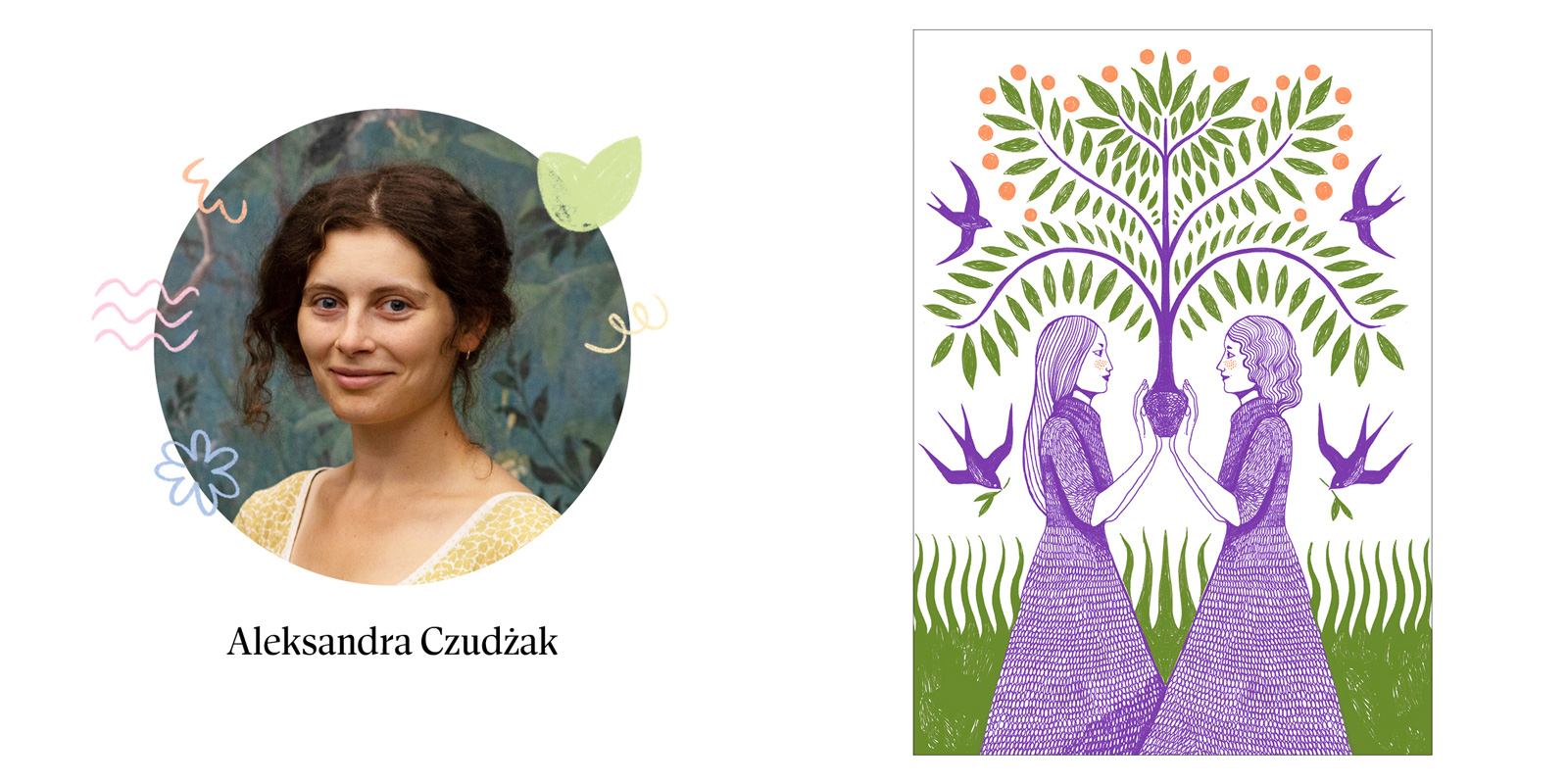
What theme or emotion did you work with in your illustration, and how did you choose to depict it?
Magda Chołaścińska:
“My chapter was titled ‘Our Support’ — and that’s exactly what I wanted to show: that sometimes a really small gesture can bring light into someone’s daily life. In my illustration, that light is a small match that gives off a lot of brightness. I juxtaposed night and day, a sleeping world and one in bloom — to show that while reality may not change, the way we see it can. With presence and support, everything can take on a different tone. The world becomes a bit more optimistic — with space to flourish, to breathe, to feel carefree for a moment.”
Zosia Dzierżawska:
“I’m an illustrator, but I’m also the mother of two children — and I remember very clearly how much it meant to have support and access to information in those first days of my children’s lives. Those first days and hours stay with us forever, and they often shape the months and years to come. Sometimes, there’s nothing more important than a few empathetic and professional sentences offered in those early moments.I deeply wish for respect and attentiveness toward new parents — especially mothers — to become the foundation of perinatal care. Publications like Powitalnik bring us closer to that goal.”
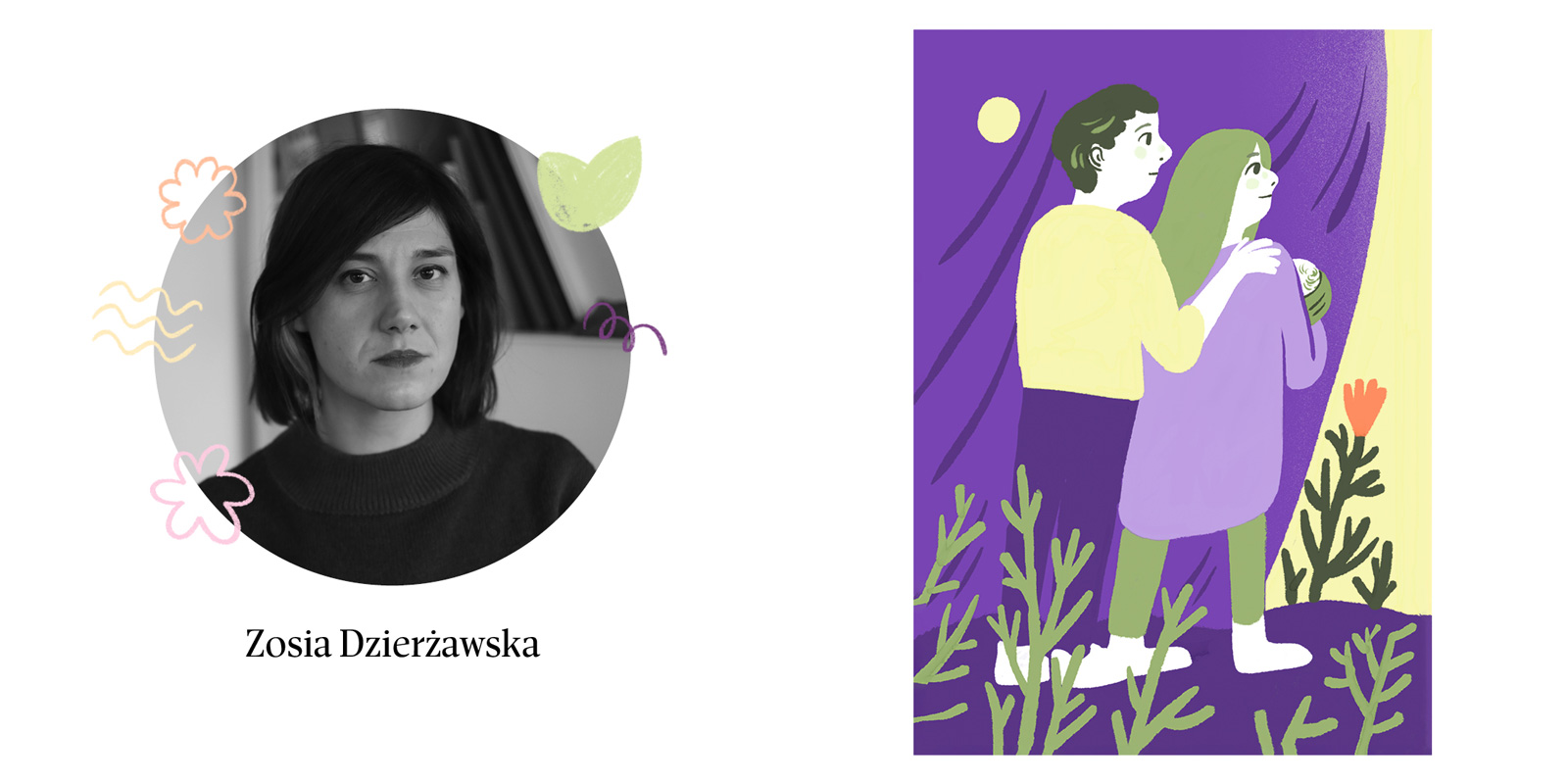
Marianna Oklejak:
“In the image I created, all the elements were cut from thin tissue paper, layered, and backlit. A grown-up’s hand is gently holding a child’s — and at the point of contact, a new plant is growing. It symbolizes new life, shared from that moment forward.I believe that even from hard situations, something surprisingly beautiful can emerge. And I believe this happens through giving and receiving warmth and tangible help — exactly what Powitalnik offers.”
Asia Wójtowicz:
“I decided to explore the theme of relationships. I don’t have children yet, so this was the most personal aspect for me. In my illustration, I focused on how partners support one another. I depicted two people watering each other and surrounded by lush plant life. With support, we can grow together and create something new.”
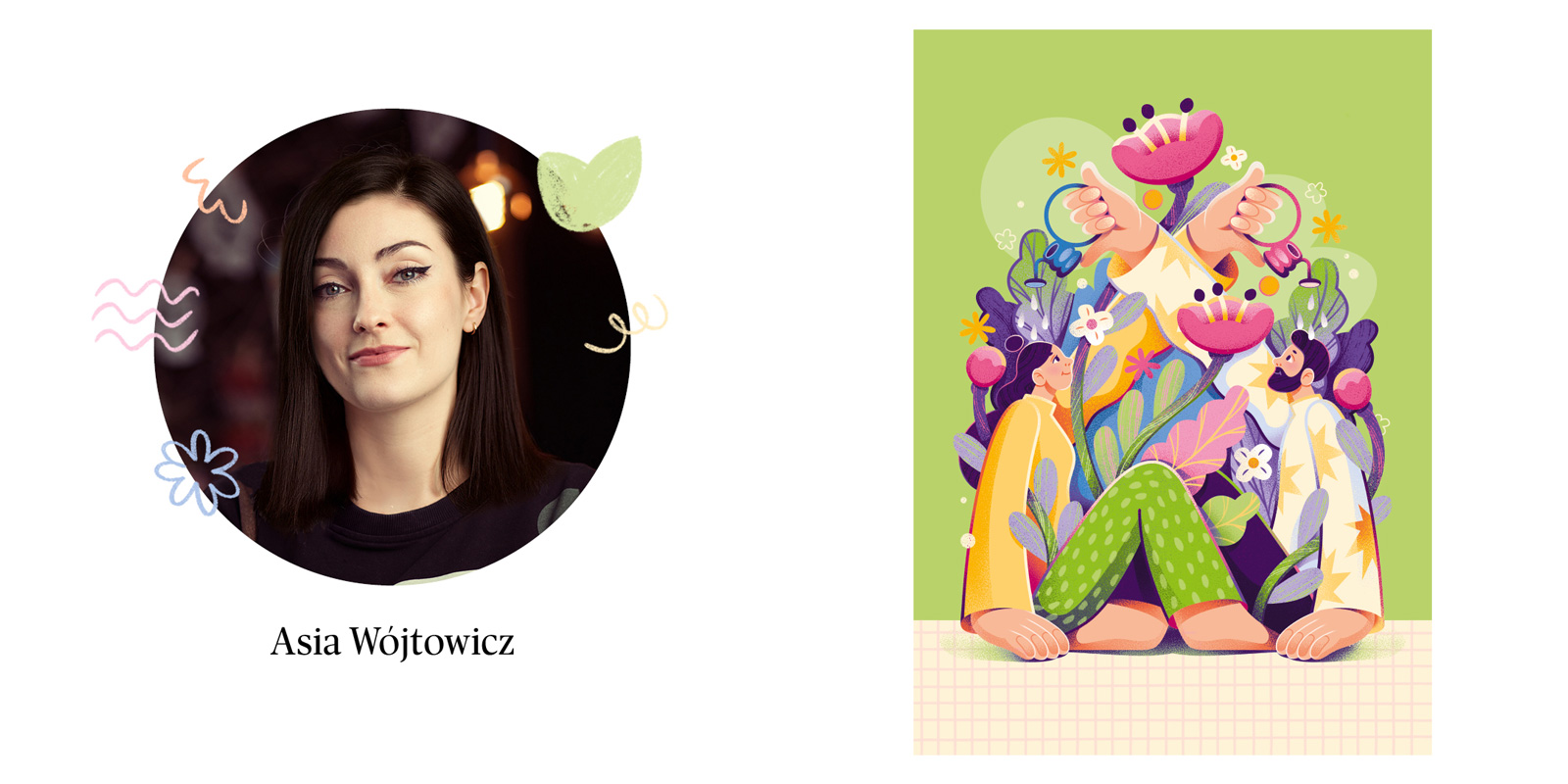
Iga Ścibek:
“My chapter focused on physical therapy. I thought a lot about how important it is that this topic not be seen as just therapy and effort, but also as tenderness and play. It’s easy to imagine physiotherapy as a cold, clinical process, but from what I’ve seen with my loved ones, it can be filled with warmth and encouragement.”
Ada Zielińska:
“My illustration was about everyday care for mental health. I approached the ‘psychological toolkit’ as a set of a few simple, symbolic elements. At the center is a head — a symbol of our inner world and thoughts. Although there are darker fragments inside, the overall image is bright and colorful, to reflect the positive and supportive tone of the topic. Abstract forms and a variety of elements show the complexity of our minds — but also their creativity and vitality. A hand holding a leaf symbolizes mindfulness and kindness, toward both ourselves and others. I wanted the illustration to feel approachable and a little playful, but to carry a serious message: that caring for ourselves and others isn’t a luxury — it’s a daily need.”
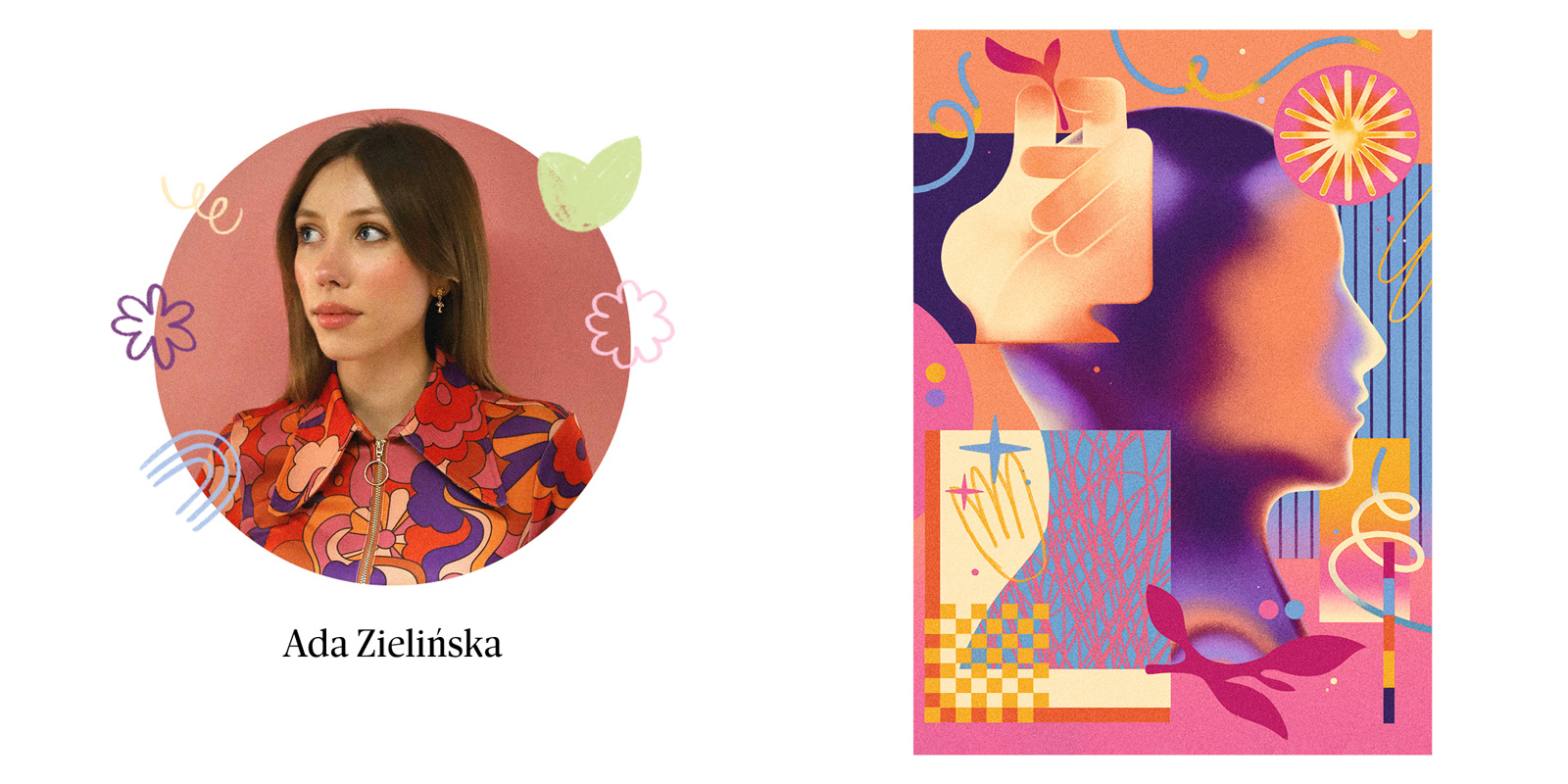
Katarzyna Bogucka:
“I always try to approach every topic in a constructive way. This time, the theme was self-care — relaxation, calm, time for oneself — things that mothers often lack. I focused on breathing, because it seems key to achieving balance and clarity.”
Aleksandra Czudżak:
“My illustration appears at the end of Powitalnik. It’s part of the concluding chapter — a kind of farewell. I wanted it to feel uplifting and to depict support and sisterhood. I wanted to show that even through difficulty, there are people or places we can turn to. A tree growing from the hands of women symbolizes care, mindfulness, and collective action. It’s an image that says, ‘You are not alone.’”
What message would you like to share with parents who will see your illustration in Powitalnik
Iga Ścibek:
“I think children have a magical ability to find joy and love in any situation. They can laugh at a physio session, be delighted by a ball, or by a small step forward. I wish for parents to catch as many of those moments as they can — and to remember that it’s okay to be tired, to feel uncertain, and to ask for help. Not only for your child, but also for yourself :).”
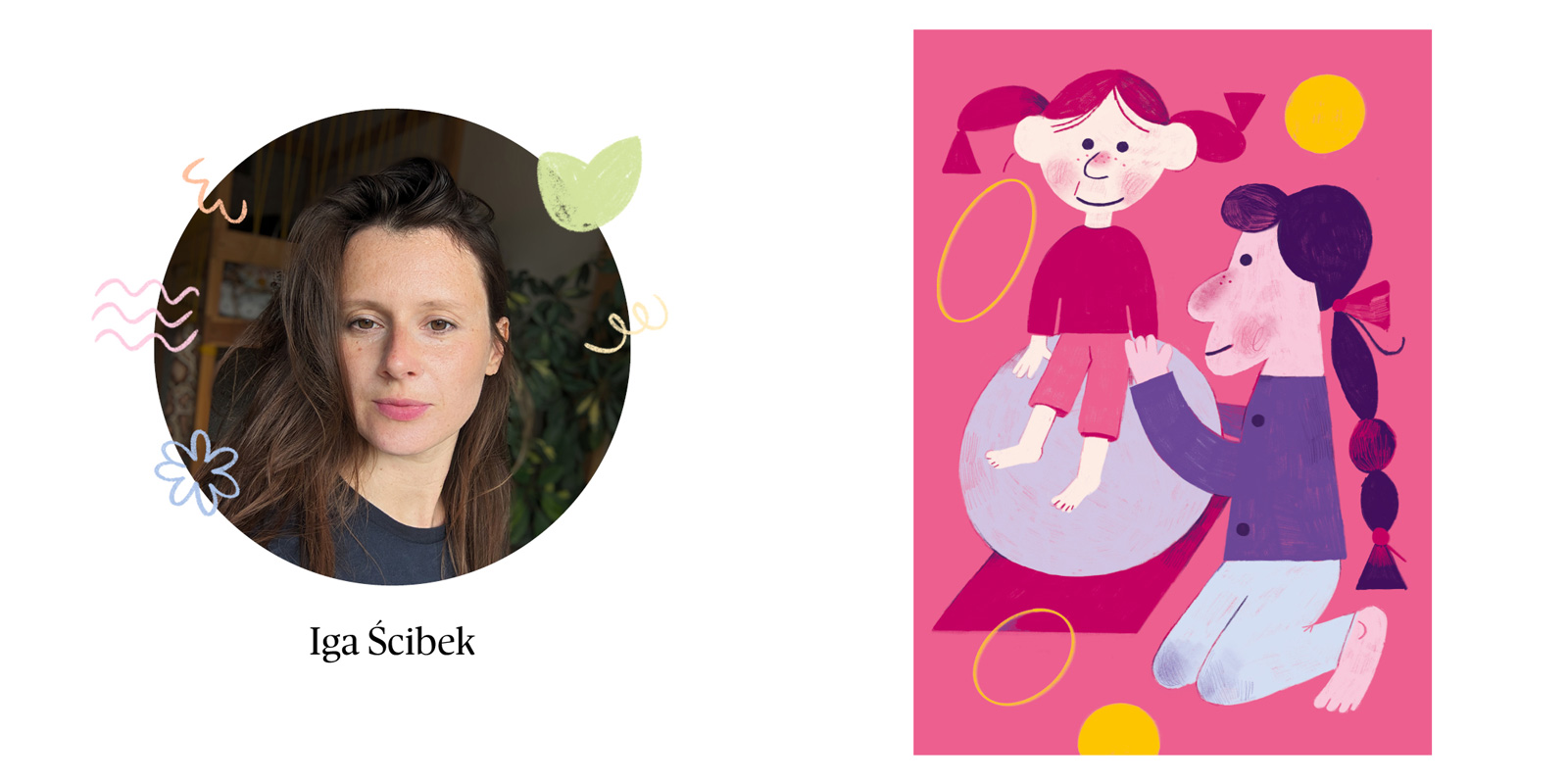
Asia Wójtowicz:
“I’ll use a quote that I think expresses what I tried to convey in my illustration: ‘The measure of your humanity is the depth of your care for another person.’ — Father Mieczysław Maliński”
Artist biographies
Magdalena Kozieł-Nowak
A children’s book illustrator and graduate of the Academy of Fine Arts in Wrocław. She has illustrated dozens of titles, including The Children of Noisy Village by Astrid Lindgren. Her illustrations for Julian Tuwim for Children received a graphic distinction in the 2024 Polish IBBY Book of the Year awards and were also recognized in the PTWK competition for the Most Beautiful Book of 2024. To stay connected with the world, she enjoys leading creative workshops with children. She lives and works in Jawor, a small town at the edge of the Land of Extinct Volcanoes.
Katarzyna Bogucka
An illustrator born in 1985 and a graduate in painting from the Nicolaus Copernicus University in Toruń. Her work spans editorial, children’s books (including her own authored titles), animation, street art, and design. She received a special mention in the Bologna Ragazzi Award for Wytwórnik kulinarny. Known for her modern, geometric silhouettes and bold color palettes, she juggles work with cultural institutions, independent clients, and corporate projects. In between, she creates posters and artworks for her own label, nioska.com.
Asia Wójtowicz
An illustrator from Silesia who focuses on themes of nature, femininity, and everyday moments. Her illustrations are often reflections of how she sees the world. In her free time, she enjoys sewing, petting cats, and collecting beautiful, delightfully impractical objects.
Ada Zielińska
An illustrator and graphic artist combining a love for analog techniques with a distinct style inspired by the aesthetics of the 1970s and 1980s. She holds degrees from the Academy of Fine Arts in Warsaw (Interior Architecture) and Gdańsk (Graphic Arts), where she now teaches. Co-organizer of the ILUSTRATOR Festival, she is a recipient of the Golden KTR Award and the Gdańsk City Award for Young Artists (2021). Her work has been exhibited across Europe, the U.S., and Japan. She has worked with Adobe, Netflix, Levi’s, Spotify, The North Face, and cultural institutions such as the National Museum in Gdańsk.
Paulina Krynicka
An illustrator and designer based in Poland, with a degree in graphic design from the University of the Arts in Poznań and a background in pedagogy. Her diploma projects have been recognized in competitions such as Design32 and Project of the Year. She creates works full of warmth and humor. She works at Admind Branding & Communications as a Graphic Designer.
Marianna Oklejak
A graduate of the Academy of Fine Arts in Warsaw (2006), Marianna is an illustrator, designer, and author of children’s books. Her work has been awarded in Poland and abroad, including finalist honors in the Bologna Ragazzi Award, CJ Picture Book Award, Golden Pinwheel, and Tallinn Illustration Triennial. Her books have been listed among the White Ravens and on the Honour List of IBBY. She draws inspiration from Polish folklore and is passionate about travel and storytelling through paper cut-outs.
Magda Chołaścińska (atogrzywa)
An illustrator and graphic designer from Poznań. Trained as an architect, she has worked in the creative industry for over a decade. Her passion lies in vibrant color palettes, hand-drawn portraits, illustrated maps, branding projects, posters, and editorial work for books and magazines.
Zosia Dzierżawska
An illustrator of children’s books, comics, and editorial features, Zosia co-founded the Milan-based illustration studio Armad’illo. Her work has been recognized twice at the Bologna Children’s Book Fair and by the Society of Illustrators in New York. She collaborates with publishers in Poland and internationally, and currently lives in Warsaw.
Aleksandra Czudżak
An artist and illustrator raised in the forest and educated at the Eugeniusz Geppert Academy of Fine Arts in Wrocław. Specializing in drawing, illustration, and printmaking (notably etching), she creates book covers, murals, posters, and album artwork. Her work explores femininity, archetypes, folklore, and mythology. She collaborates with both Polish and international publishers.
Iga Ścibek
An illustrator, graphic artist, author, and mother. A graduate of the Academy of Fine Arts in Łódź and of landscape architecture at the Warsaw University of Life Sciences (SGGW). She finds endless inspiration in exploring nature — frogs, grasshoppers, beavers — with her daughter, whose joyful discoveries are central to Iga’s creative process.
The journey continues
Today, the printed edition of Powitalnik has already reached hospitals across Poland — offering tangible support to parents and caregivers during some of the most difficult moments of their lives.
To make this resource as accessible as possible, a free online version is available to everyone at www.powitalnik.pl.
If you’d like to learn more about the creative process behind the project and how we approached visual storytelling with empathy, you can explore the full case study here:
admindagency.com/projects/powitalnik-redefining-visual-communication-for-parental-support
We’re proud to have played a part in bringing this meaningful initiative to life — and to help ensure no parent feels alone when facing the unknown.

